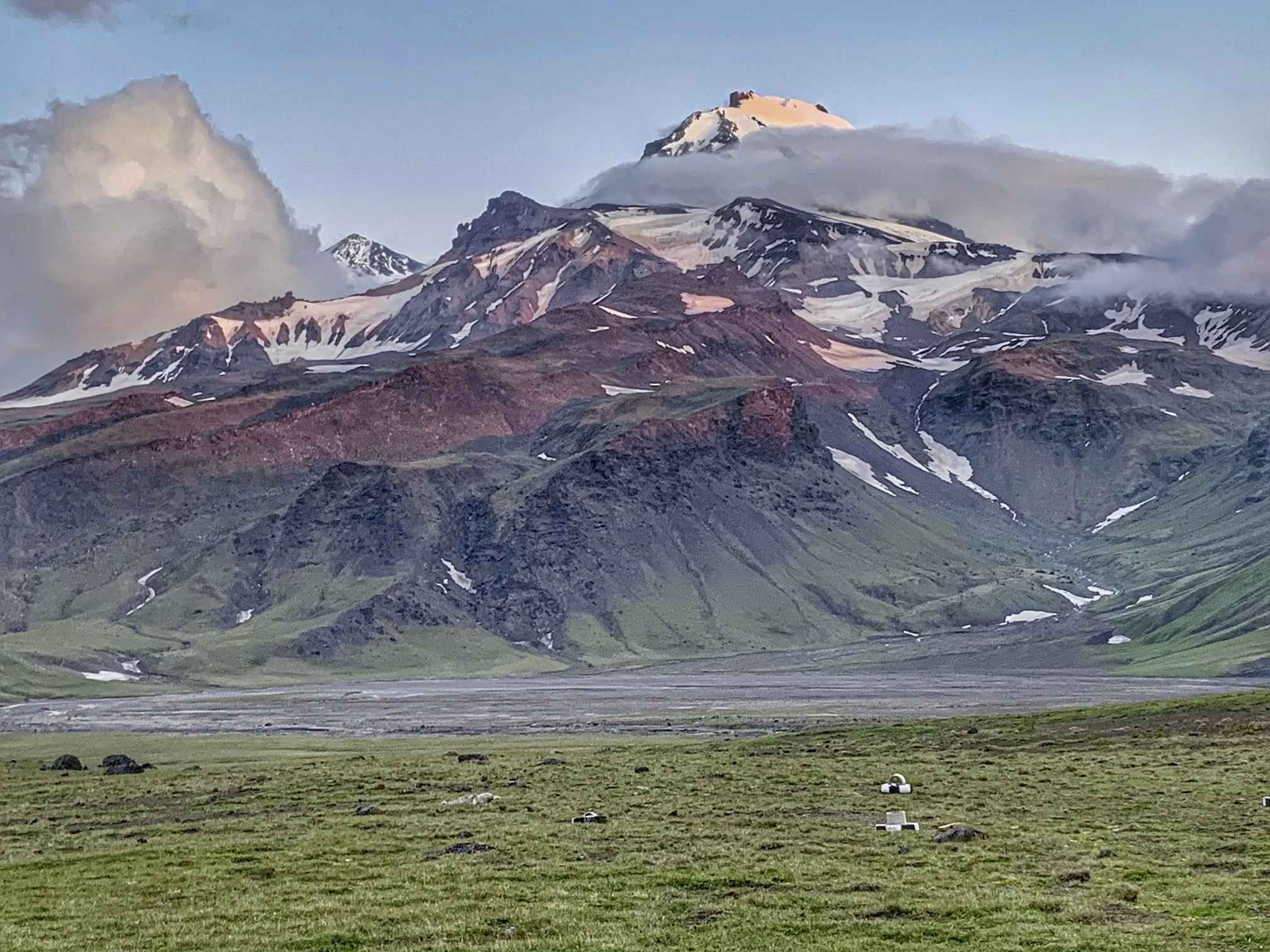
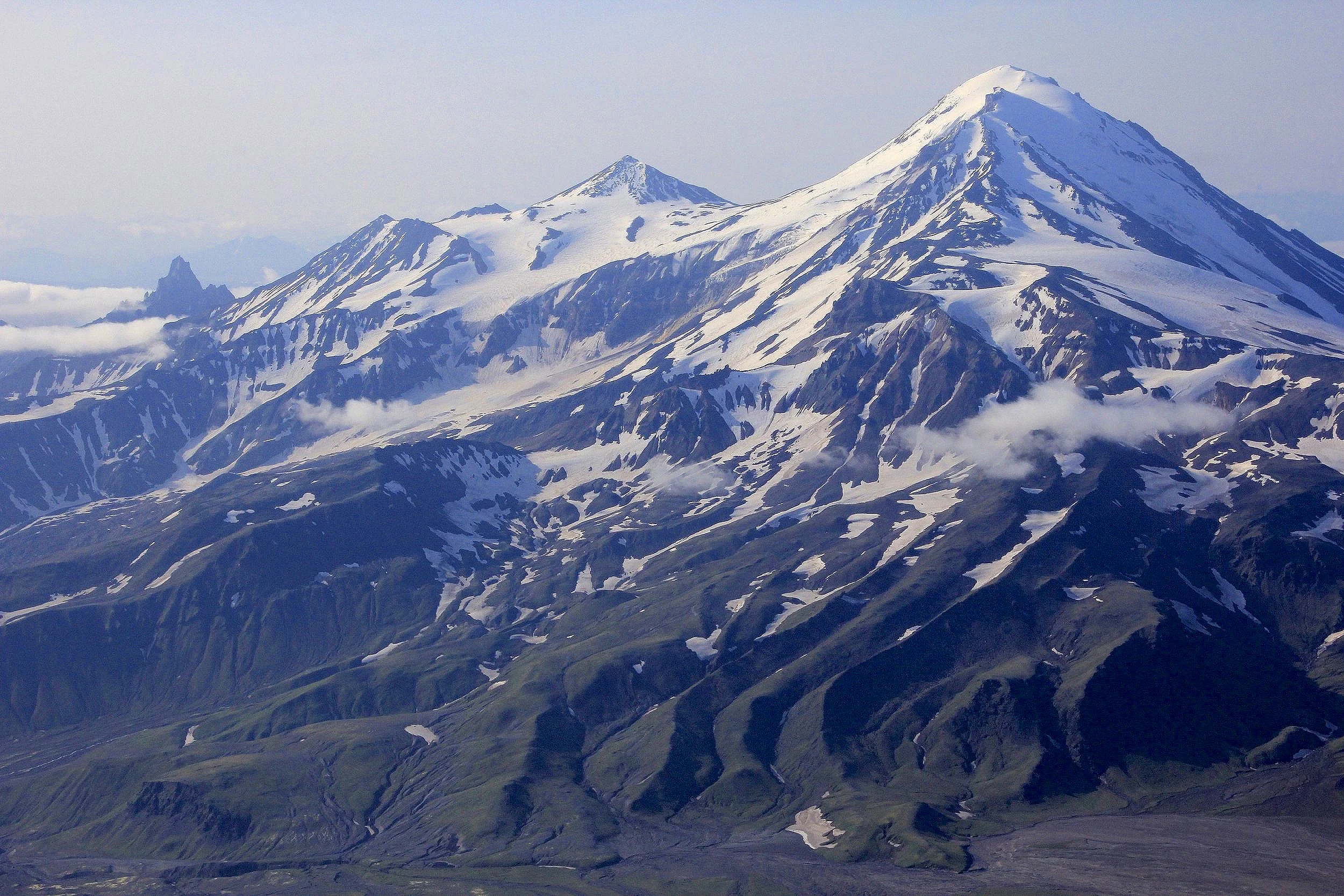


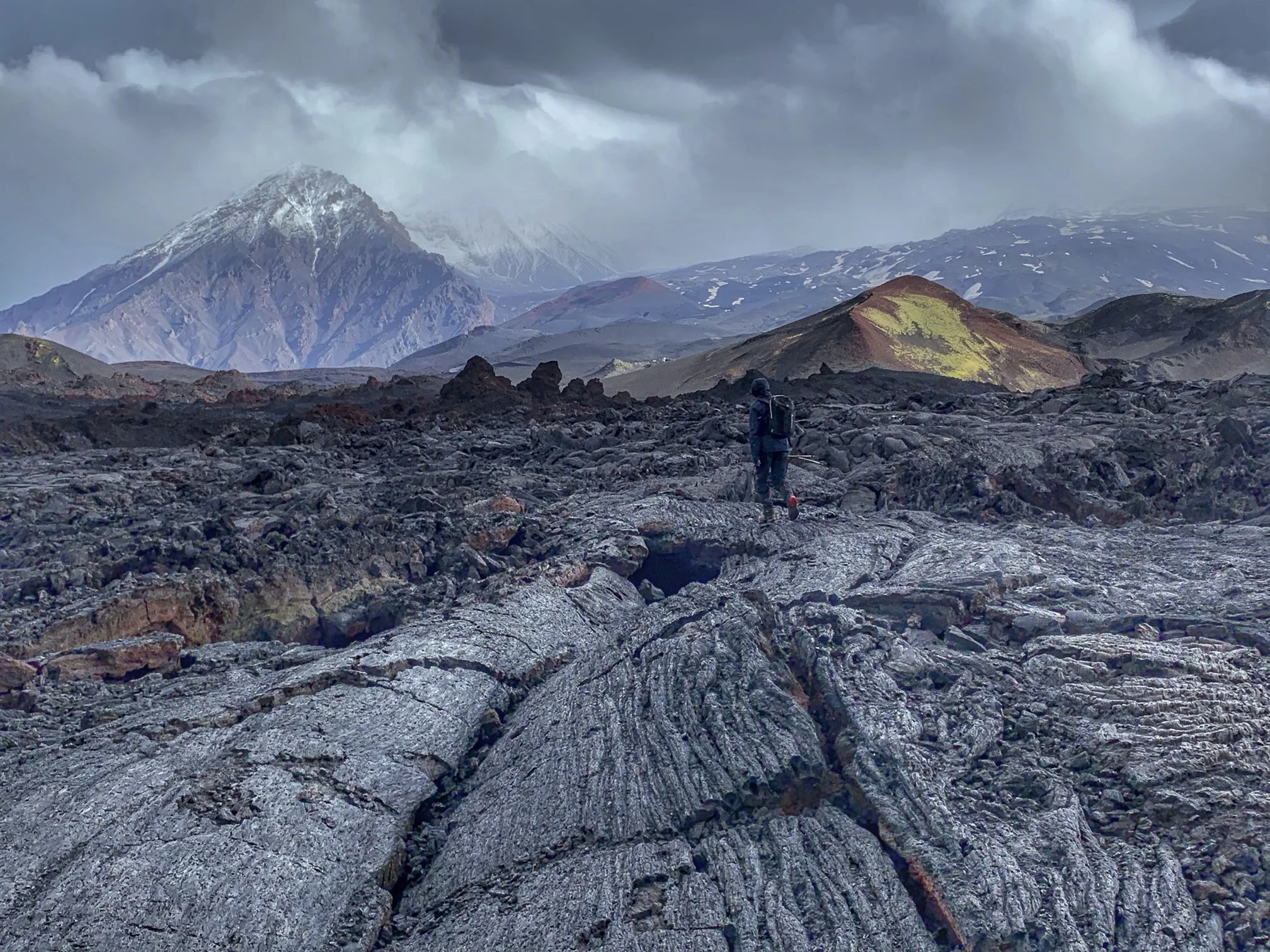
Kamchatka Volcano Hiking: A Journey of Geological Transformation
Volcano heli-trekking and geothermal hot springs in Russia's wildest peninsula.
by KA's Experience Team
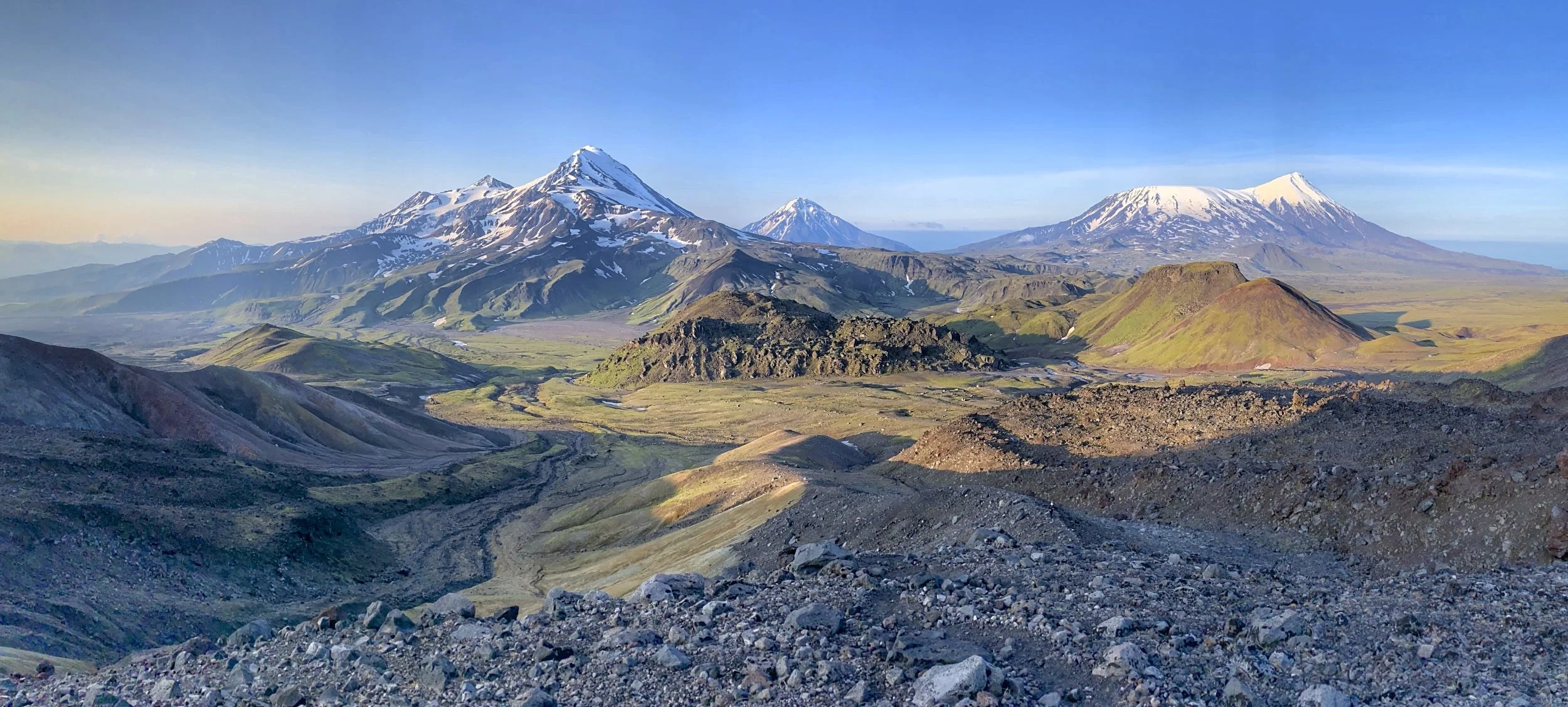
July through September
Best months to visit
February through April
Best time to book
July through September
Best months to visit
February through April
Best time to book
Reminder Set!
We'll notify you when it's the best time to book this destination.
Get reminded when it's time to book
Experience Kamchatka's 29 active volcanoes. Explore the Valley of Geysers, thermal hot springs, and the psychological impact of standing on ground that's actively transforming.
We Handle Everything. You Just Show Up.
No research. No coordination. No backup plans needed. Just your perfect journey—guaranteed.
Create Your JourneyYour coffee ripples in the cup. Not from wind. Not from a passing truck. The earth itself is moving—a tremor so small your rational mind almost dismisses it. Almost.
But your body knows. Something ancient in your nervous system recognizes this is not a vibration you can control, not a force you can negotiate with, not a problem you can solve with better planning or a longer timeline.
This is Kamchatka, ground that will not hold still.
What Happens When You Can’t Trust the Ground?
Here’s what we’re taught: Control is possible. Permanence is real. The ground beneath our feet is solid. Build your five-year plan. Architect your legacy. Design buildings to last forever.
Here’s what Kamchatka teaches: The ground is actively becoming something else. Right now. At the rate your fingernails grow.1
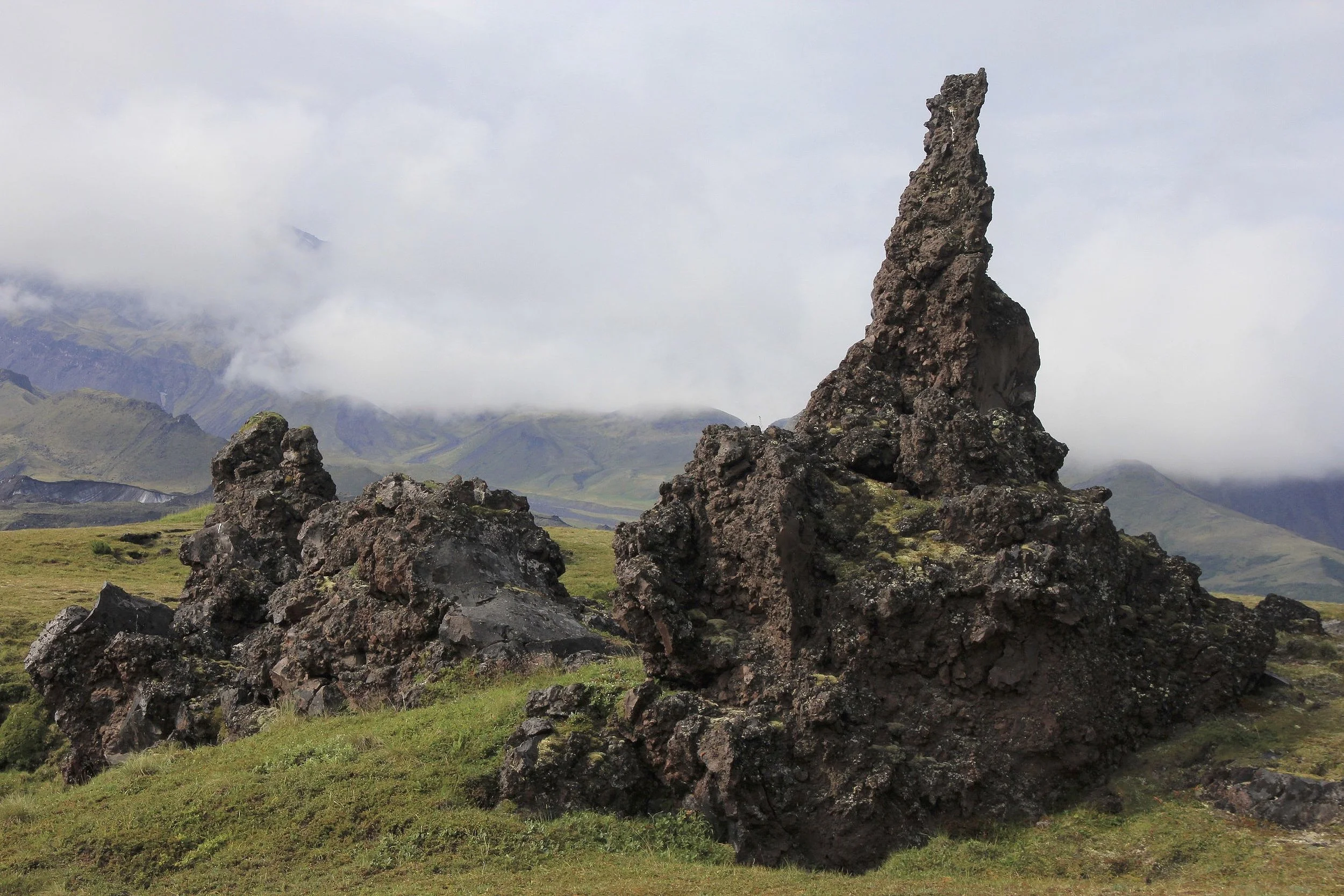
Eroded lava tower on Kamchatka’s plateau formed by ancient eruptions
Twenty-nine active volcanoes in a space smaller than California.2 The Pacific Plate sliding beneath the continent at 8 centimeters per year.3 Every week brings earthquakes you can feel—tremors that yank you out of whatever abstract anxiety was occupying your mind and drop you, viscerally, into the only moment that exists: this one.4
The question we’re asking is not “How do we conquer this landscape?”
The question is: What happens to your sense of control when you’re standing on ground that’s actively transforming?
The Fiction of Permanence
You arrive in Kamchatka carrying the weight of human-scale anxieties. Career trajectories. Financial timelines. Relationship outcomes. The tyranny of the controllable future.
These anxieties feel catastrophic because they exist in a vacuum—measured only against the small container of a human lifespan, a quarterly review cycle, a cultural moment.
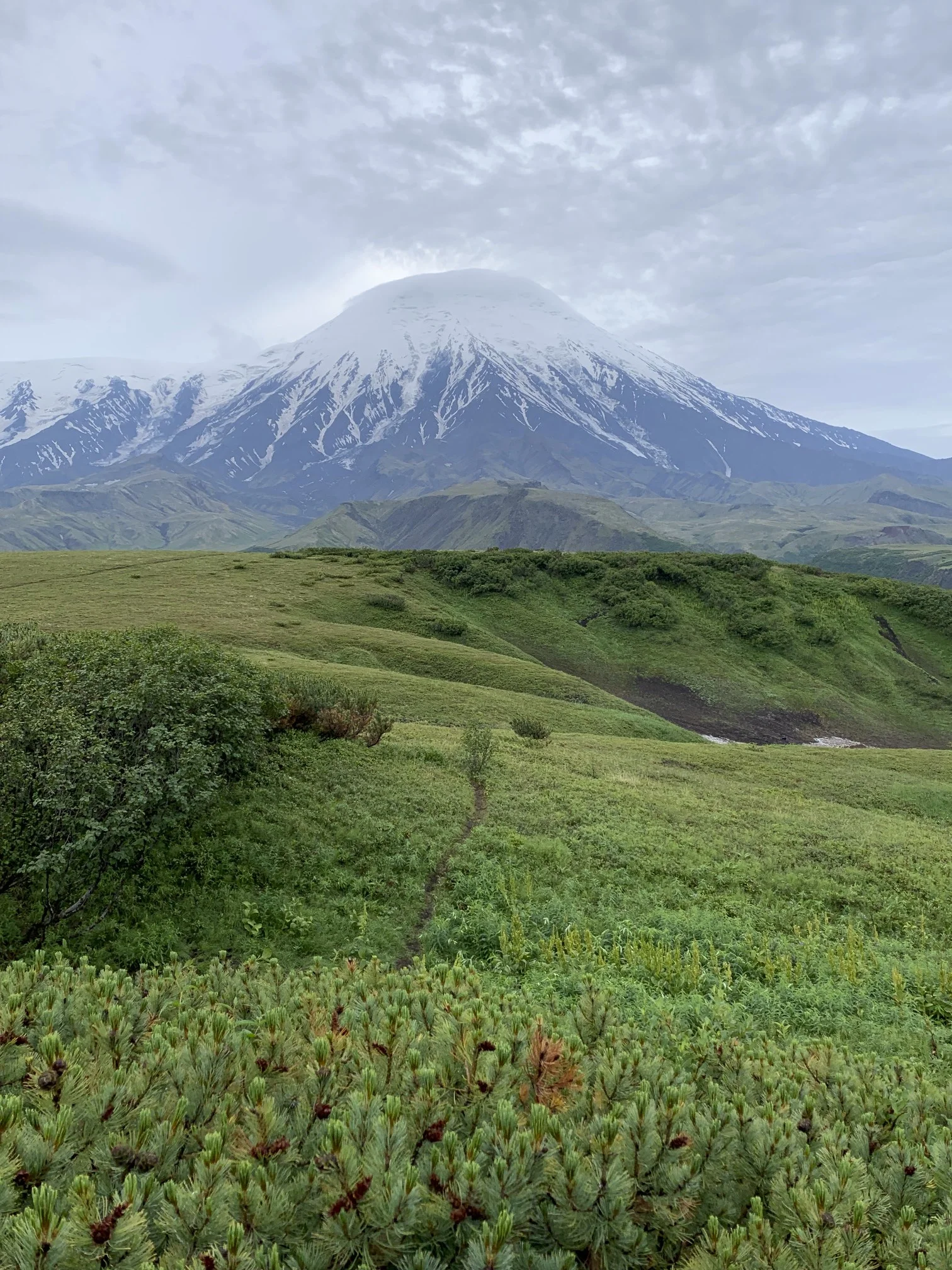
The contrast between volcanic soil and green vegetation is striking
Then you stand on a volcano that is 7,000 years old. You feel the tremor of an aftershock from last week’s earthquake—one of dozens still rippling through the crust.5 You place your hand on ground so hot it scalds, then walk three meters and touch permafrost.6
And something shifts.
Not because the anxiety disappears. But because it finds its true scale.
This is what psychologists and philosophers call the “geological sublime”—a confrontation with forces so vast, so impersonal, so utterly indifferent to human effort that it produces what one researcher describes as “anxious discomfort.”7 But this discomfort is not trauma. It’s recalibration. It’s the dissolution of the fiction that you were ever in control.
The Helicopter Is Not Luxury. It’s Necessity.
In most landscapes, roads are a given. In Kamchatka, roads are a fantasy.
The primary sites of this journey—the Valley of Geysers, the Kronotsky Nature Reserve, the thermal springs at the base of active calderas—are accessible only by helicopter.8 Where roads do exist, they are “progressively deteriorating” Soviet logging tracks that can be, and often are, erased overnight by lahars, floods, or simple subsidence.9
The helicopter is not transport. It’s the frame. It provides the god’s-eye view that makes the human-geologic scale comparison possible. It reinforces your fragility—a small machine in vast wilderness, subject to “harsh weather” and the inherent vulnerability of flight.10
Most importantly, it unlocks the inaccessible. The sites you’ll visit require not just permission—these are zapovedniki, strict nature reserves “mainly accessible only to scientists”11—but the logistical capacity to move across a landscape that refuses human infrastructure.
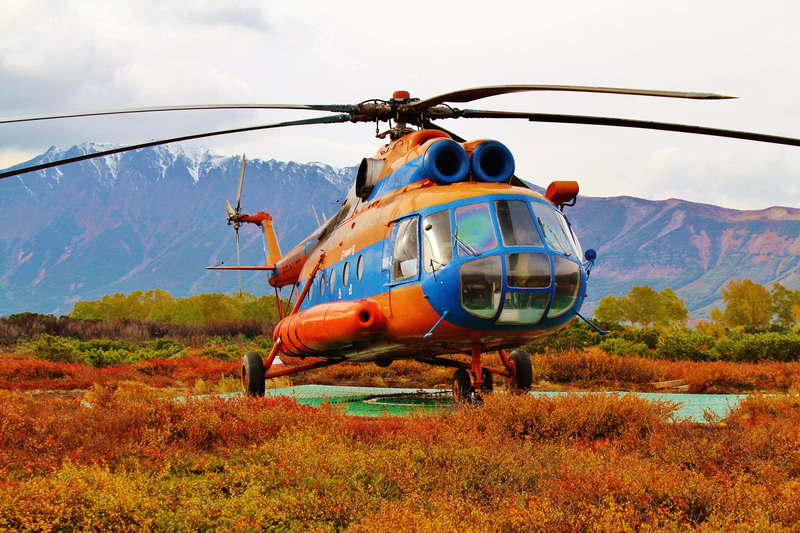
Helicopter landing at the Valley of Geysers
This is why this journey exists at the intersection of scarcity and investment. A dedicated Mil Mi-8 helicopter. A ten-day charter across one of Earth’s most volcanically active regions. Six travelers maximum. The cost reflects not luxury, but the true price of access: $700 USD for a single day’s permit to enter Kronotsky alone.12
You are not buying comfort. You are buying time and access to a landscape that does not want you there.
What the Itelmen Knew
Long before Western geology mapped the tectonic plates, the Itelmen people had a different framework for understanding the earth’s movement.
They called the volcanoes gomuls—conscious beings, mountain spirits who lived in the peaks.13 The mythology is precise: At night, the gomuls hunt whales in the sky, impaling the leviathans on each finger. They return to the mountaintops and roast their catch in the great fires. This is why the volcanoes glow at night. This is why great heaps of whalebone lie at the summits.14
To Western science, this is metaphor. To the Itelmen, it was epistemology.
What modern “Geological Anthropology” now recognizes is that the Itelmen cosmology was not primitive—it was advanced.15 Western geology, with its strict “ontological distinction between life and non-life,” renders the Earth inert, passive, dead.16 The Itelmen worldview grants the land agency. The land is not a thing that is acted upon. The land acts.
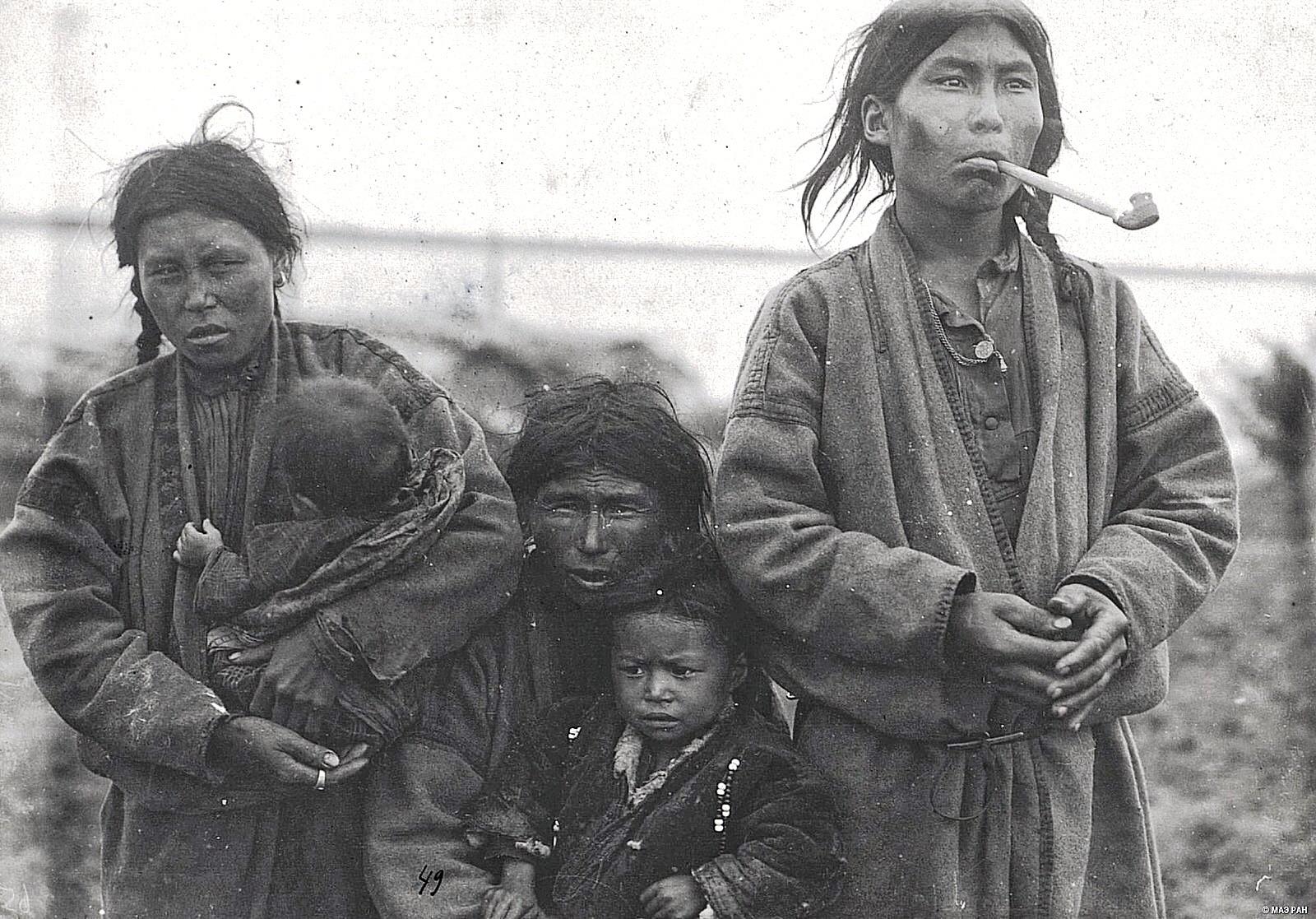
The Itelmen people
The psychological difference is profound. When a volcano erupts in the Western framework, it is a random, meaningless disaster—something that happens to people, inducing fear and helplessness. In the Itelmen framework, the eruption is an intentional act by a living being. The gomuls are feasting.
A being that feasts can be understood, respected, co-existed with. A random disaster can only be feared.
This journey is not about adopting Indigenous mythology. It’s about recognizing that your current framework for processing geological forces may be making you more anxious, not less.
The Woman Who Found a Landscape Breathing
On April 14, 1941, Soviet geologist Tatyana Ustinova and her guide, Anisifor Krupenin, were searching for the source of the Shumnaya River when they made one of the 20th century’s most significant geological discoveries.17
Krupenin’s firsthand account: “Suddenly on the far shore, steam snorted, water rumbled, and a jet tore diagonally across the river straight for us… ‘It’s a geyser,’ Tatyana said.”18
They named it Pervenets—“Firstborn.”19
What makes this discovery extraordinary is not just the geysers themselves—though the Valley of Geysers is now recognized as one of Earth’s five major geyser fields.20 It’s the fact that even the Itelmen, whose lives revolved around fishing these rivers, had never visited this valley. They walked upstream once, saw the water was “naturally polluted” with the “full periodic table of elements,” and never returned.21
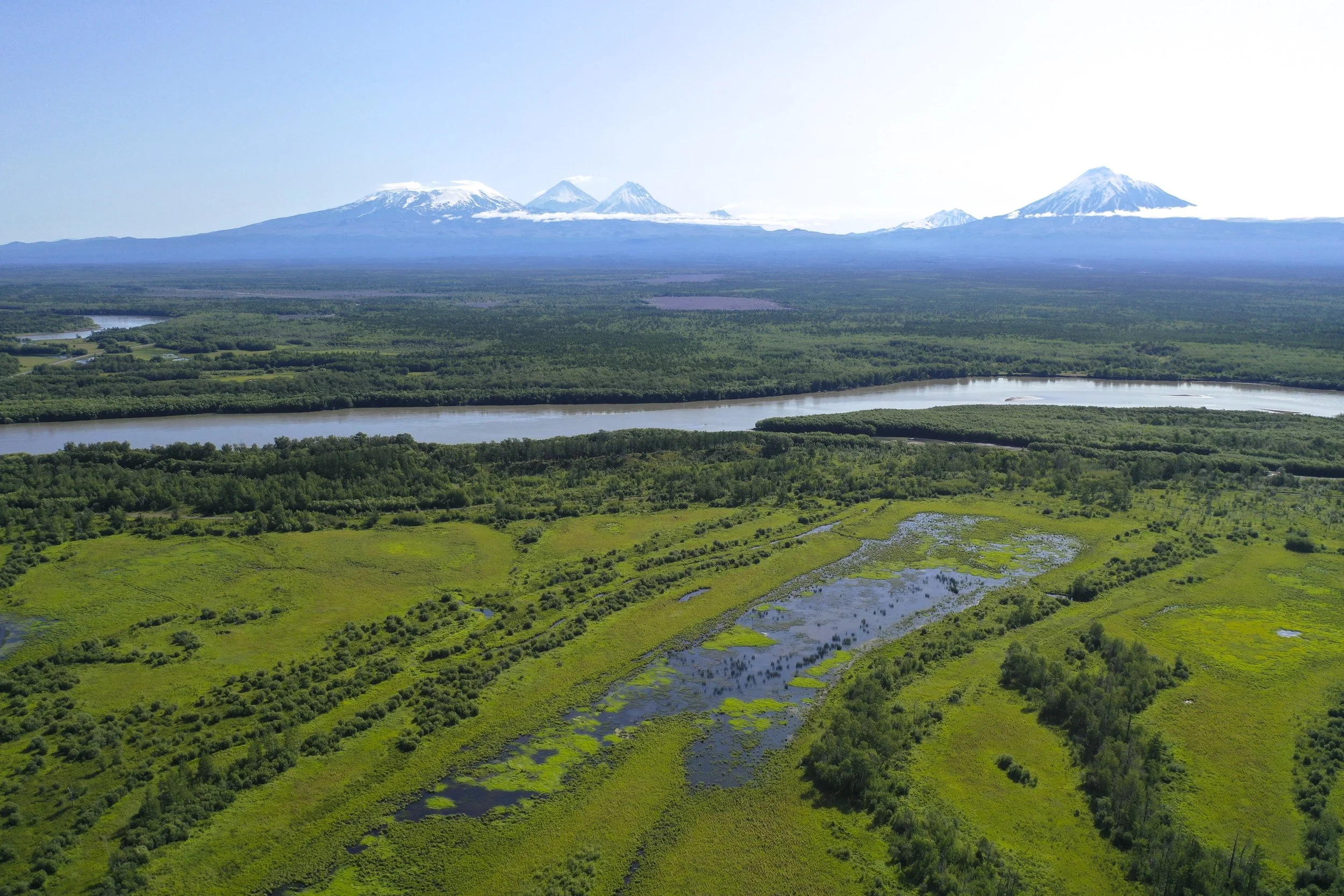
The Valley of Geysers - one of Earth's most spectacular geothermal landscapes
The Valley of Geysers was a place so devoid of human utility—too acidic to fish, too volatile to settle—that it remained unknown until 1941. It is, in the purest sense, a primal landscape. A place that exists for itself, not for humans.
Ustinova’s valley is where you will sleep. In a place that breathes—gurgling, hissing, steaming, pulsating.22 You will learn to calibrate your sleep to the rhythm of the earth’s exhalations.
You Are Standing at the Origin of Life
Here’s the counter-intuitive truth that transforms this journey from adventure into pilgrimage:
Kamchatka is not just an analogue for life on other planets. It is a window into the origin of life on this one.
NASA astrobiologists study Kamchatka’s geothermal vents to “understand how life might originate, evolve, and reproduce in harsh environments in the Solar System and beyond.”23 The extremophiles here—organisms thriving in 95°C water at pH 1 (sulfuric acid so concentrated you cannot immerse your finger)—are used as “model systems for life on other planets.”24
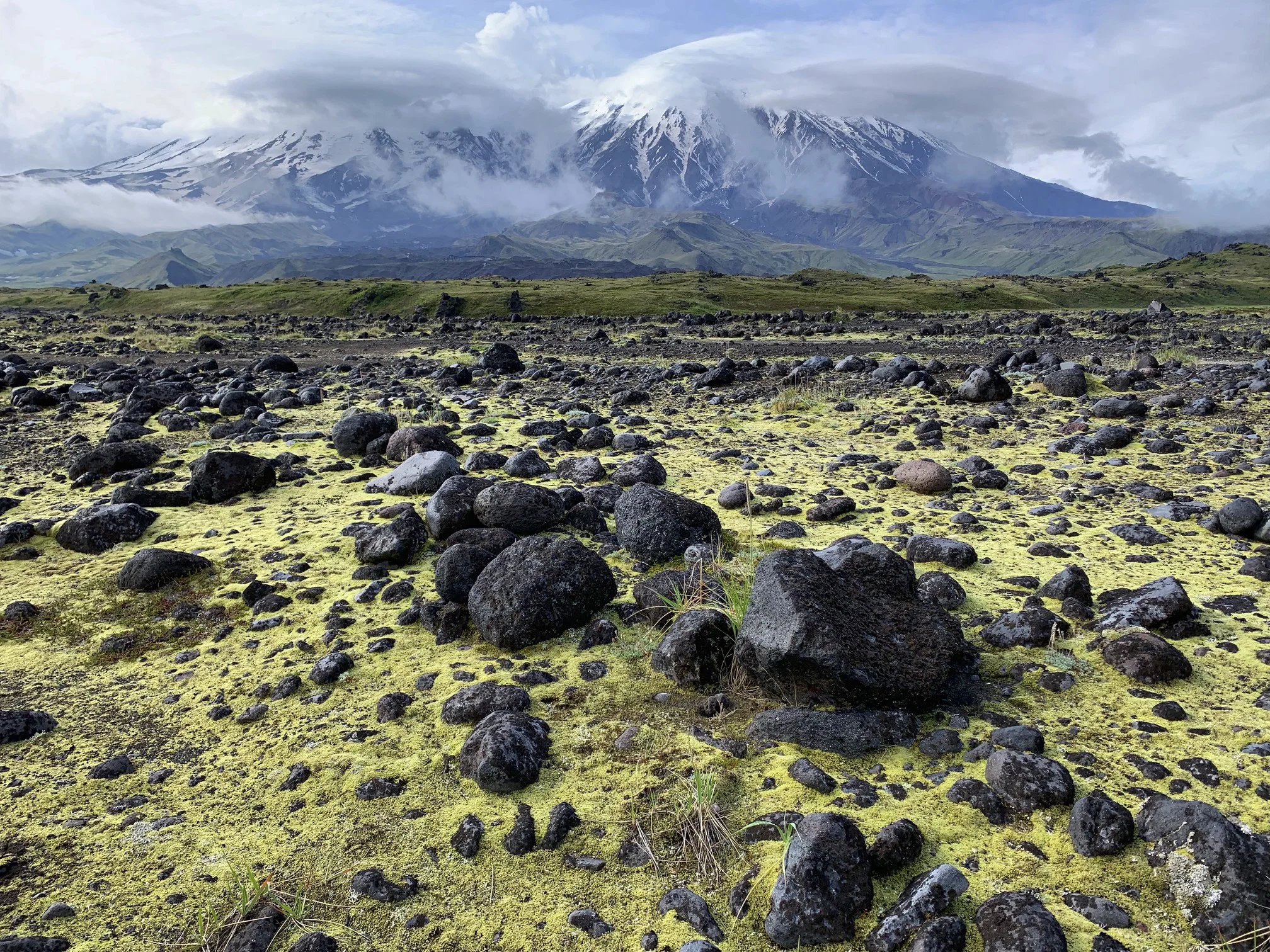
Ancient volcanic bombs - minerals that may hold clues to life's origins
But the most profound research is closer to home. Kamchatka’s geothermal region is a primary research site for the “Hot Spring Hypothesis for an Origin of Life.”25 This hypothesis posits that life on Earth began not in deep-sea vents, but in fluctuating, freshwater hydrothermal pools on land—exactly like those on Mount Mutnovsky.26
The boiling, acidic mud you will observe is not just a scientific curiosity. It is a model of the ancestral environment of every living thing on this planet.27
You are not visiting a laboratory. You are visiting a phylogenetic origin point. That thermal pool may be the closest living relative to the conditions that produced you, 3.5 billion years ago.
Who Returns Changed
An architect, after returning: “I stopped designing buildings as if they’d last forever. That felt like a lie after Kamchatka. Now I design for transformation. The structures I create are more honest, more accurate to what buildings actually are—temporary shelters in a world that’s always becoming something else.”
This shift—from designing for permanence to designing for transformation—is not poetic abstraction. It is a leading-edge professional discourse in architecture.28 Architects grappling with climate change and sea-level rise are intellectually wrestling with impermanence.29 Designers of ephemeral structures, like Burning Man’s Temple, are artistically choosing impermanence as an aesthetic constraint.30
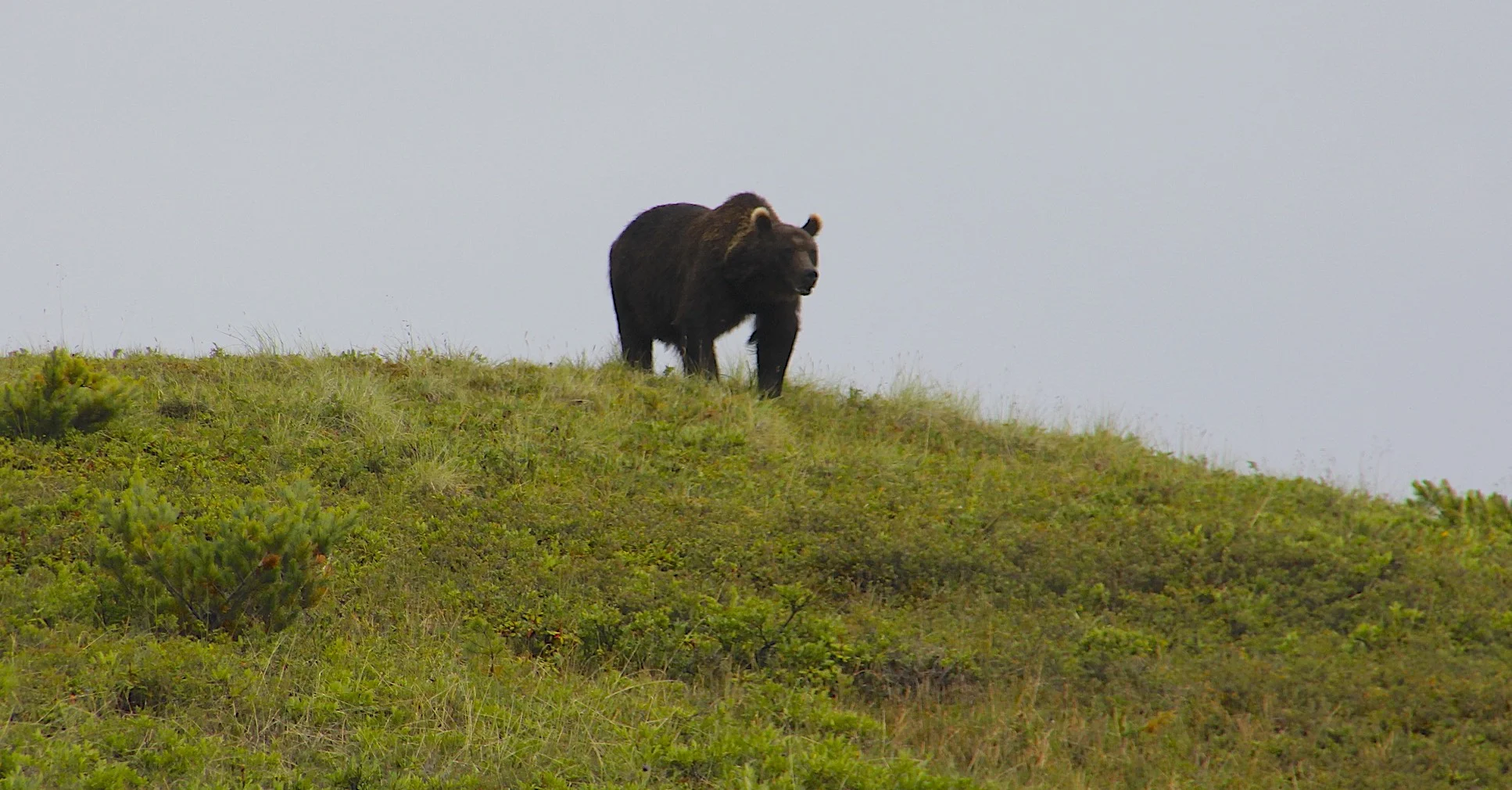
Wildlife encounters that remind us of our place in the natural world
But most professionals are arriving at this concept through thought alone. The Kamchatka participant experiences impermanence as a non-negotiable natural law. The ground moves. The roads are erased. The landscape is visibly being born of fire.31
This is what allows the shift from intellectual concept to embodied truth.
The Broader Inquiry: How Does Geography Shape Consciousness?
This journey is one expression of a larger question: How does the physical landscape alter the structure of human thought?
We are exploring parallel inquiries:
-
Iceland: Glacial Retreat & Collective Memory — How does watching your homeland physically disappear change the structure of memory itself? Icelanders are experiencing “solastalgia”—homesickness for a home you’re still standing in.32
-
Bhutan: High-Altitude Silence & Decision-Making — In an environment that is both cognitively enhancing (silence improves “decision-making processes and emotional regulation”)33 and cognitively degrading (high-altitude hypoxia impairs “psychomotor function and long-term memory”),34 what is the net effect on consciousness?
-
Danakil Depression: The Boundaries of “Livable” — In one of Earth’s most extreme environments—“hostile to life,” with “hyperthermal and hyperacidic” pools35—astrobiologists study why and how “life persists.”36

The varied terrains that shape different aspects of human consciousness
These are not adventure itineraries. They are field research sites for understanding the relationship between body, landscape, and mind.
The Terms
When: August through September. This is the only viable operational window—the “golden time” when slopes are free of snow, temperatures range between 10-20°C, and volcano hiking is possible.37 Even then, weather remains “very unpredictable,” which is why a dedicated, on-call helicopter is non-negotiable.38
Duration: Ten days. Less than this, and the nervous system does not have time to recalibrate. More than this is logistically and psychologically unsustainable in an environment this demanding.
Group Size: Six travelers maximum. This is a function of helicopter capacity and the strict environmental protections on the reserves we’ll access.39
Investment: Commensurate with scarcity. A dedicated Mil Mi-8 helicopter and crew for ten days in one of the world’s most remote regions. Permits to access zapovedniki nature reserves that are “mainly accessible only to scientists.” Time in a landscape that does not want human infrastructure.
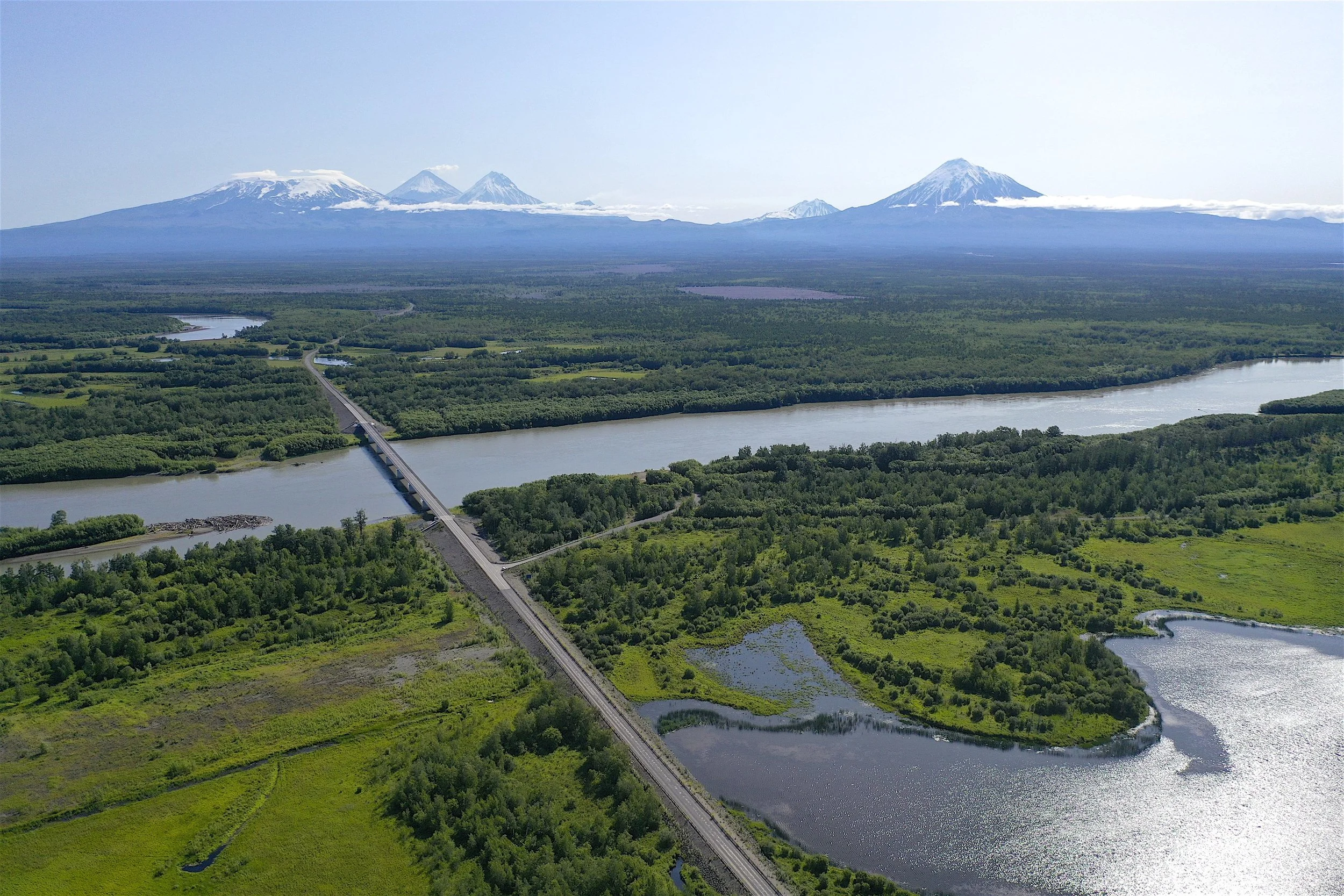
The scale of Kamchatka's wilderness - helicopter access is the only practical way
This is not a premium on luxury. This is the true cost of access to a landscape that remains, by design and by geology, almost unreachable.
What You’re Actually Buying
Not a vacation. Not an adventure. Not a story to tell at dinner parties.
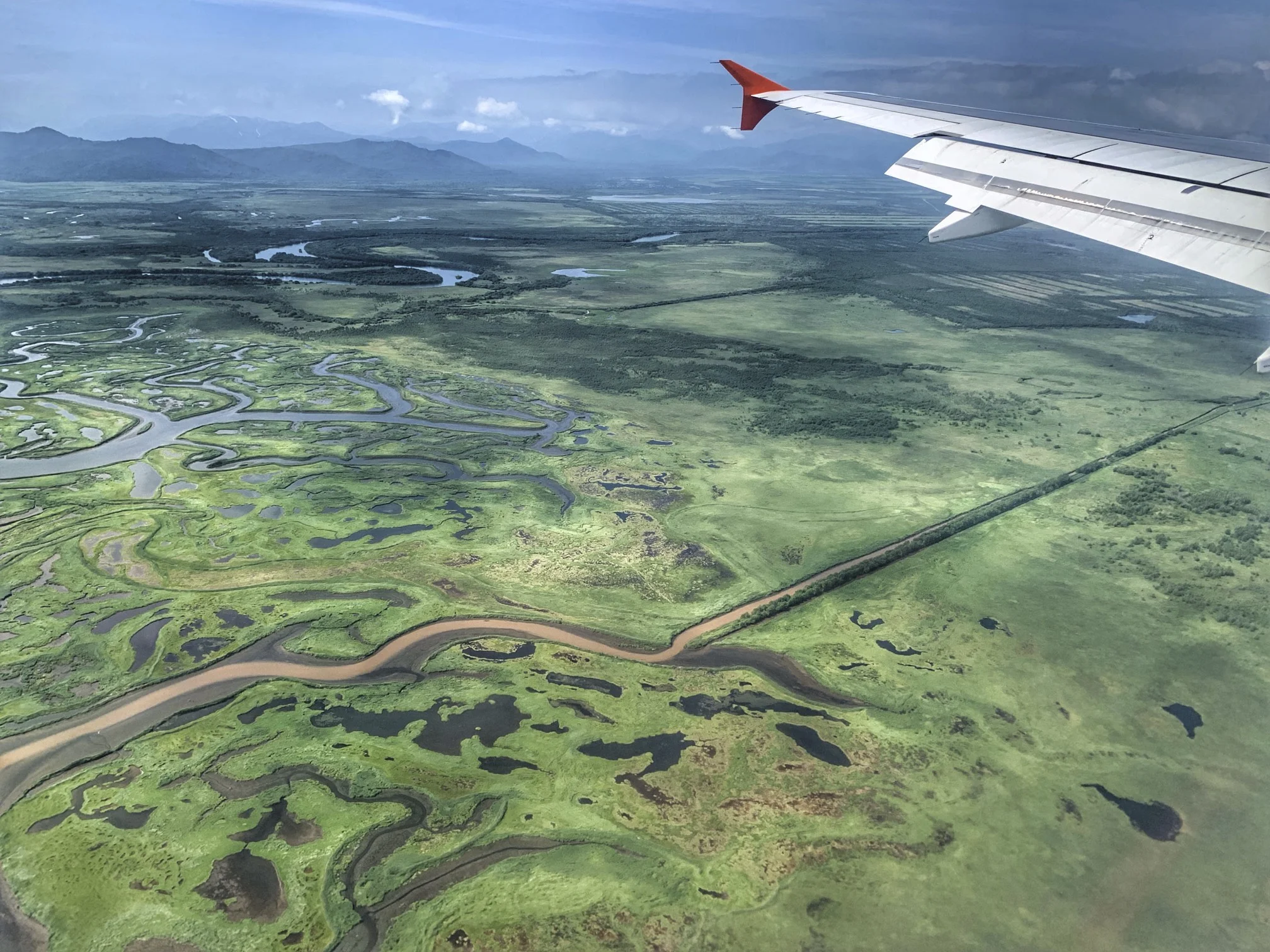
The living landscape that teaches us about our own impermanence
You are buying a recalibration of your nervous system’s relationship to control.
You are buying the dissolution of the fiction of permanence.
You are buying ten days where your chronic, human-scale anxieties—the ones that feel catastrophic because they exist in the small container of quarterly reviews and five-year plans—are placed against a 7,000-year-old volcano that is, right now, becoming something else.
And in that comparison, the anxiety does not disappear. It finds its true scale.
The ground will not hold still. And by the end, you will have learned that this is not a problem to solve.
It is the condition of being alive.
We Handle Everything. You Just Show Up.
No research. No coordination. No backup plans needed. Just your perfect journey—guaranteed.
Create Your JourneyMedia Attribution
Photography courtesy of The Trek Blog.
Footnotes
-
U.S. Geological Survey: “Tectonic plates move roughly at the same rate that your fingernails grow” (~3 cm/year). Human fingernail growth: approximately 0.1 mm/day or 3 cm/year. Source ↩
-
UNESCO World Heritage documentation confirms: “More than 300 volcanoes are found in Kamchatka, 29 being currently active.” The Kamchatka Peninsula area: ~270,000 km². California: ~423,970 km². Source ↩
-
At the Kuril-Kamchatka Trench, Pacific plate subduction occurs at approximately 80 mm/yr (8 cm/yr). Source ↩
-
Following the fictional 2025 M8.8 Kamchatka earthquake, residents described “swaying buildings, falling furniture, ‘dancing’ cars.” One stated: “Everyone is absolutely freaked out. It was the strongest earthquake in decades.” Source ↩
-
USGS aftershock forecast calculated >99% chance of one or more M5+ aftershocks and 96% chance of an M6+ event in the first week following the M8.8 event—all well within the range of being “felt.” Source ↩
-
Scientific study of the Valley of Geysers identifies “exothermal (non-heated)” and “endothermal (heated)” soils warmed by endogenous fluids, creating distinct thermal zones over short distances. Source ↩
-
The sublime is defined by its “negative aesthetic force,” producing “anxious discomfort.” However, this leads to “benevolent consequences”—humility and profound self-reflection. Source ↩
-
The Valley of Geysers and Kronotsky Nature Reserve are “accessible only by helicopters.” There are no roads. Source ↩
-
Where roads exist, they are “progressively deteriorating roads” and “old Soviet logging tracks.” Source ↩
-
The 2024 Mil Mi-8 helicopter crash confirms that helicopter charters for tourists visiting these “scenic areas” are the standard mode of transport, with inherent risks. Source ↩
-
Kronotsky is a Zapovednik (Strict Nature Reserve), “mainly accessible only to scientists.” Source ↩
-
The fee for a tourist to visit the Kronotsky Reserve is US$700 for a single day’s visit. Source ↩
-
Ethnographic research: “The mountain gods were called gamuli or little souls, who resided in the high mountains, especially volcanoes.” Source ↩
-
“Legend tells that by night, the gomuls take to the sky and hunt whales, returning home with the leviathans impaled on each finger and proceed to roast them in the great mountain fires… This is why the volcanoes lit up at night.” Source ↩
-
“Geological Anthropology” critiques Western “white geology” for its strict separation of life and non-life. Source ↩
-
Western geology’s “ontological distinction between life and nonlife” renders the Earth inert and passive. Source ↩
-
On April 14, 1941, Soviet geologist Tatyana Ustinova and her guide Anisifor Krupenin discovered the Valley of Geysers. Source ↩
-
Krupenin’s firsthand account of the discovery moment. Source ↩
-
They named the first geyser Pervenets, or “Firstborn.” Source ↩
-
The discovery placed Kamchatka on the map as one of the world’s five major geyser fields. Source ↩
-
The Itelmen likely “did once walk up toward VG, but seeing how naturally polluted and fishless the river was” due to the “full periodic table of elements,” they never returned. Source ↩
-
Descriptions of the valley include “gurgling,” “hissing, steaming and bubbling,” and “pulsating springs.” Source ↩
-
NASA’s Astrobiology program confirms astrobiologists study terrestrial hot springs, including those in Russia, to understand life’s origins. Source ↩
-
Scientists describe the conditions: “The water is bubbling up at 95 degrees Celsius. The pH is 1, about 0.1 molar of sulfuric acid. I would not immerse my finger in that water.” Source ↩
-
Kamchatka’s geothermal region is a primary research site for the “Hot Spring Hypothesis for an Origin of Life.” Source ↩
-
This hypothesis posits that life on Earth began in fluctuating, freshwater hydrothermal pools on land—like those on Mount Mutnovsky. Source ↩
-
These pools are “plausible candidates for prebiotic sites supporting the assembly of protocells.” Source ↩
-
Architect Martin Gold: “I try to frame my teachings through the idea of impermanence” in the face of sea-level rise. Source ↩
-
Gold notes: “Once you accept that this is a viable way to look at things, it changes your reactions… you need to plan for change.” Source ↩
-
Architect Miguel Arraiz discusses “designing a space meant to burn” and “what it means to build for memory rather than permanence” in creating Burning Man’s Temple. Source ↩
-
The Kamchatka landscape is described as being “born of fire,” with visible ongoing geological transformation. Source ↩
-
“Solastalgia” is defined as the feeling of being “homesick for my home even though I am still here”—a form of climate grief experienced by Arctic inhabitants. Source ↩
-
Research confirms that “silence” can improve “decision-making processes” and “emotional regulation.” Source ↩
-
High-altitude exposure has a “moderate negative effect on cognitive performance,” particularly “psychomotor function and long-term memory.” Source ↩
-
The Danakil Depression is described as “one of the most extreme environments for life,” “hostile to life,” with “hyperthermal” and “hyperacidic” pools. Source ↩
-
Scientists study the Danakil because despite extreme conditions, “life persists.” Source ↩
-
August through September is cited as the best time to visit—the “peak of the tourist season” and “golden time” with favorable weather (10-20°C) and snow-free slopes. Source ↩
-
Weather remains “very unpredictable” with potential for rapid changes, making flexible helicopter access essential. Source ↩
-
The six-traveler limit is a function of helicopter capacity and UNESCO’s re-evaluation of “maximum permissible recreational capacity” to reduce environmental impact on protected reserves. Source ↩
